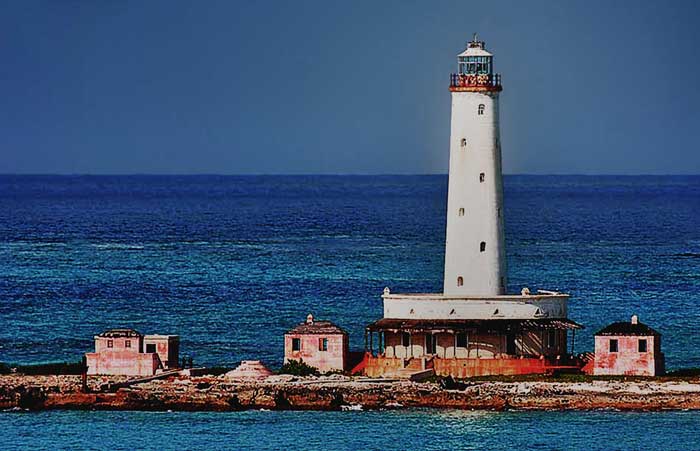
Bird Rock Cay Lighthouse on Crooked Island, Bahamas
Last month we found out where to find your HDR images and some tips on gear.
Let’s continue with your inner high dynamic range photo vision.
Part Two: Inner Visions of the Crooked Island Lighthouse
The scene changes… We’re standing on the windswept shores of the island Columbus named after his sponsor – “Isabella”. Just a quarter mile off its northwest shore stands Bird Rock Cay Lighthouse, a magnificent complex built by the British in 1876.
The story continues. Approaching Bird Rock Cay, the fragrance of herbs from Crooked Island fades as one gets closer to the tower complex. The subtle smell of rusting iron takes over. After I land on the Cay, the odor of helmet conch rotting in the sun lingers in the air. A salty-kelp scent is borne by a north breeze that kisses your lips in March, but splits them open, painfully, in strong December gales.
All horizons are visibly bright, almost blinding. The shallow Bahama banks surrounding Bird Rock Cay roll away into an infinite blue smile and they seem to be watching an HDR photographer approach their remote island by dinghy. Rising above the Bird Rock Cay complex, the light’s alabaster tower soars 100 feet high as it breaks through the blues in the Bahamian sky.
I enter the lighthouse building. The way is gentle at first, with broad concrete steps leading to the tower door. Once through the door, a perilous climb begins: each iron stair grows layers of rust thick enough to invoke prayer and bargaining. Pausing to slow the heart, and looking down, dust motes colored pale blue are floating in the stout doorway and waft into the wide room at the foot of the rusty spiral staircase. After this breathless ascent, the rewards of reaching the top room are visual. . . the panoramic scene outside has too many hues of blue for the mind to absorb.
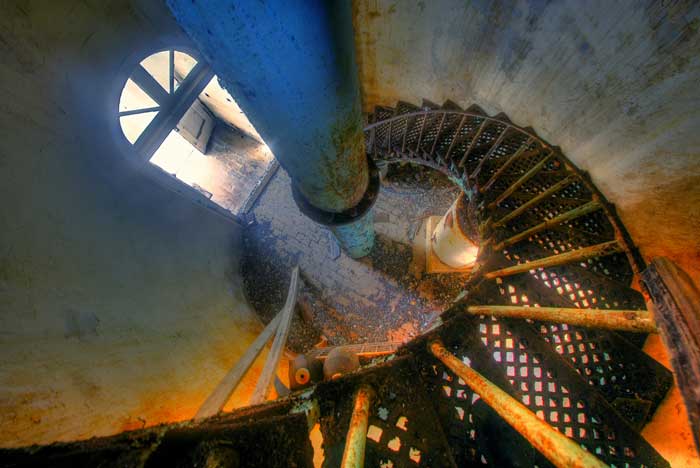
Metal staircase inside the Bird Rock Cay Lighthouse on Crooked Island, Bahamas
HDR Methods:
Taking five or seven bracketed exposures for each HDR image, I chose a wide angle lens. Stabilizing a hand held DSLR by bracing it against the metal rungs of the staircase, or against the cool pale wall inside the lighthouse, ensured that all exposures would be in register before they were blended together in Photomatix Pro software. Instead of a full size tripod, I took a 12-inch high, bantam-weight Manfrotto tripod with a ball head. It was safer to carry.
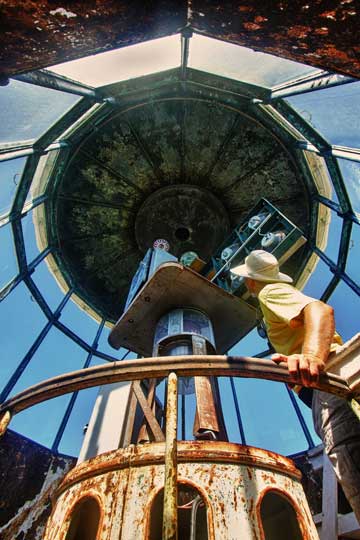
Reached the Top
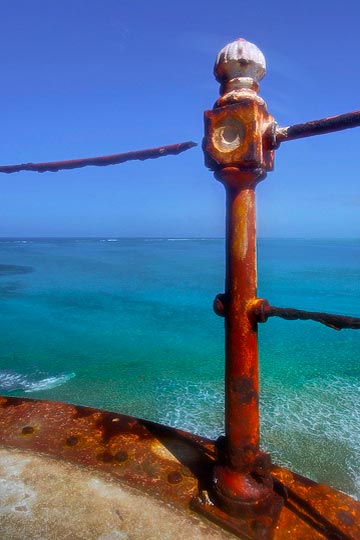
What a View!
HDR Workflows:
~ You can use Photomatix Pro Software and then touch-up the blended exposures in Lightroom.
~ Another good HDR workflow is to create a 32-bit tif file in Adobe Photoshop and then use Adobe Lightroom to bring out all of the details.
~ I’ve used Photoshop to create a 32-bit tif file, edited it in Lightroom, and then duplicated it with NIK’s Silver Efex Pro (a Lightroom plug-in) in order to make a texture map, then blended in Photoshop CS5, and completed the image in Lightroom and the Topaz Adjust plug-in.
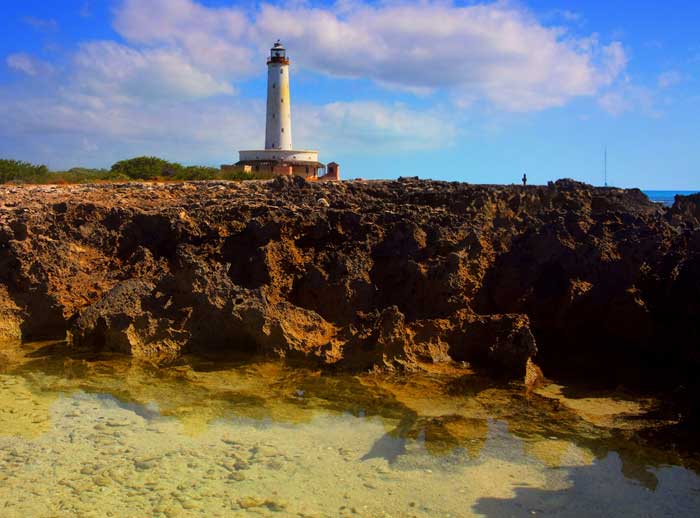
Rough, Rugged, and Rocky Shoreline
For well over a century, the Bird Rock Cay Lighthouse and the Great Stirrup Lighthouse has guided ships through shallow passages between iron shore bound islands. They seem to defy time, yet each is fading slowly against the timeless power of the sea. Like them, HDR methods will change over time. As photographers, we can only see for today, with our individual visions. Vision and curiosity guided one photographer to these remote lighthouses and may do so yet again.
To understand terms like bracketing and tone mapping, see Austin’s previous article on Apogee Photo.
by Jim Austin
All text and photos: © 2012 Jim Austin. All rights reserved.

Leave a Reply